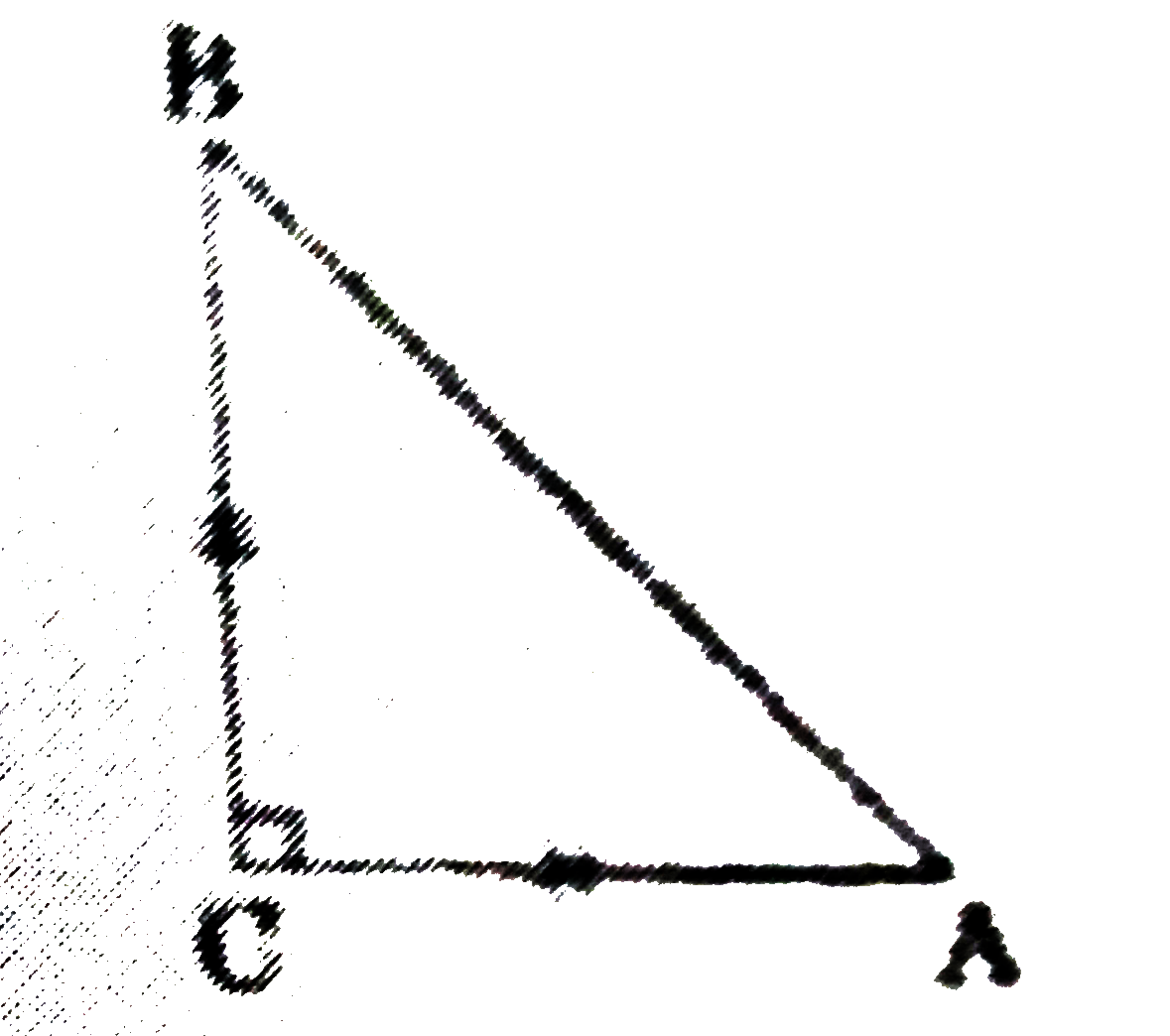In ABC , if r :r1:R=2 :12 :5, where all symbols have their usual meaning, then ABC is an acute angled triangle ABC is an obtuse angled triangle ABC is right angled which is not isosceles ABC is isosceles which is not right angled
To determine the type of triangle ABC based on the given ratios r:r1:R=2:12:5, we will follow these steps:
Step 1: Understand the Ratios
We are given the ratios of the inradius r, the exradius r1, and the circumradius R. The ratios can be expressed as:
rR=25andr1R=125
Step 2: Calculate rr1
From the ratios, we can also derive:
rr1=rR⋅Rr1=2/512/5=212=16
Step 3: Use the Relationship Between the Radii
We know that for any triangle:
rr1=tanB2tanC2tanA2
Substituting the value we found:
16=tanB2tanC2tanA2
Step 4: Analyze the Angles
From the above equation, we can conclude:
tanB2tanC2=16tanA2
This indicates a relationship between the angles of the triangle.
Step 5: Determine the Type of Triangle
To determine whether triangle ABC is acute, obtuse, or right-angled, we can analyze the values of the angles based on the tangent function.
1. If A is acute, then tanA2 is positive and less than 1.
2. If A is obtuse, then tanA2 is positive and greater than 1.
3. The relationship tanB2tanC2=16tanA2 suggests that A is likely acute, as the product of the half-angle tangents of B and C is less than tanA2.
Conclusion
Since rr1<1 and rR<1, triangle ABC is an acute-angled triangle.
Final Answer
Triangle ABC is an acute-angled triangle.
---
We are given the ratios of the inradius r, the exradius r1, and the circumradius R. The ratios can be expressed as:
rR=25andr1R=125
From the ratios, we can also derive:
rr1=rR⋅Rr1=2/512/5=212=16
We know that for any triangle:
rr1=tanB2tanC2tanA2
Substituting the value we found:
16=tanB2tanC2tanA2
From the above equation, we can conclude:
tanB2tanC2=16tanA2
This indicates a relationship between the angles of the triangle.
To determine whether triangle ABC is acute, obtuse, or right-angled, we can analyze the values of the angles based on the tangent function.
2. If A is obtuse, then tanA2 is positive and greater than 1.
3. The relationship tanB2tanC2=16tanA2 suggests that A is likely acute, as the product of the half-angle tangents of B and C is less than tanA2.
Since rr1<1 and rR<1, triangle ABC is an acute-angled triangle.
Triangle ABC is an acute-angled triangle.
Topper's Solved these Questions
Similar Questions
In a triangle ABC, 8R2=a2+b2+c2 prove that the triangle is right angled
View SolutionIn figure ABC is an isosceles triangle , right angled at C . Therefore

View SolutionIf triangle ABC is right angled at C, then the value of sec (A+B) is
View SolutionIn a ΔABC, if a=13,b=14andc=15, then ∠A is equal to (All symbols used have their usual meaning in a triangle.)
View SolutionIn a triangle ABC a:b:c=√3 :1 : 1, then the triangle is- right angled triangle (b) abtuse angled triangle acute angled triangle, which is not isosceles Equilateral triangle
View SolutionIf in a triangle ABC,tanA+tanB+tanC>0 the triangle is (A) acute angled triangle (B) obtuse angled (C) right angled (D) none of these
View SolutionABC is an isosceles triangle with AC=BC . If AB2=2 AC2 , prove that ABC is right triangle.
View SolutionCan an acute-angled triangled be a. and equilateral, b. an isosceles, and c. a scalene triangle ?
View SolutionIn a triangle ABC, if acosA=bcosB, show that the triangle is either isosceles or right angled.
View SolutionCan an equilateral triangle be a, an acute-,b. a right-, and c. an obtuse-angled triangle ? What about isosceles and scalene triangles ?
View Solution
